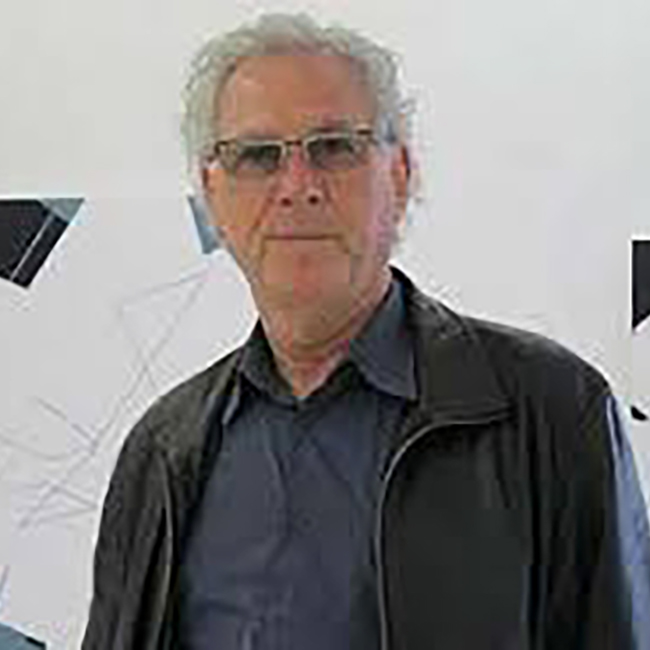SIGGRAPH 2013 Distinguished Artist Award: Mohr
Awardee(s):
Award:
- Distinguished Artist Award
Description:
The 2013 ACM SIGGRAPH Lifetime Achievement Award in Digital Art is awarded to Manfred Mohr for his pioneering achievements in creating art through algorithmic geometry. Beginning his creative career in the late l950’s as a jazz musician and painter, he focused on gestural abstraction. In 1962, Manfred began the exclusive use of black and white as means of visual and aesthetic expression. After discovering Professor Max Bense ‘s information aesthetics in the early 1960 ‘s, his artistic thinking was radically changed. Within a few years, his art transformed from abstract expressionism to computer generated algorithmic geometry. Encouraged by the computer music composer Pierre Barbaud, Manfred Mohr programmed his first computer drawings in 1969. The combination of mathematics and music gives his work a core essence of rhythm and repetition.
In 1972, Manfred began producing sequential drawings and started working on the fixed structure of a cube and made his first computer generated films. He renewed his work on the 4-D hypercube in 1987, using four-dimensional rotation as a generator of signs. Since 1995, Manfred Mohr has been part of “The Algorists” founded by Jean-Pierre Hebert and Roman Verostko. After using black and white for more than three decades, Manfred began to use color in 1998 to show the complexity of the work through differentiation. Four years later, he designed and built small PCs to run his program “space.color” and in 2004 wrote the program “subsets .” The resulting images are visualized on LCD flat panels in a slow, non-repetitive motion. He then developed the program “klangfarben,” which encompasses a body of paintings and animations based on the 11th dimensional hypercube using its diagonal paths as compositional building blocks. The program runs on a PC and the resulting images and animations are visualized in real time on two square LCD flat panels. His latest software “Artificiata ll” creates digital paintings and animations that are based on the 11th to 13th dimensional hypercube and uses diagonal paths as graphic elements. The animation algorithm contains random variations of speed and suites of stills adding a musical rhythm to this work. This area of creative exploration of visual complexity continues to the present day.
Among his accomplishments are the Golden Nica from Ars Electronica, Linz 1990; Artist Fellowship, New York Foundation of the Arts 1997; and the [ddaa] d.velop Digital Art Award, Berlin 2006. The ARC, Musée d’Art Moderne de la Ville de Paris hosted the now historic first one-person show of computer-generated digital images in 1971. Other venues for his solo shows include the Joseph Albers Museum Bottrop, Museum for Concrete Art lngolstadt, and the Kunsthalle Bremen. The ZKM I Media Museum in Karlsruhe, Germany is currently hosting a retrospective of his work, “The Algorithm of Manfred Mohr, 1963 – now” from June 8 – September 1, 2013 and he is a Featured Artist at Art Basel 2013.
Manfred Mohr has been represented in many group shows and museums, including the SIGGRAPH Pioneering Artists; MoMA – Museum of Modern Art, New York; Centre Pompidou; ZKM (Center for Art and Media); Museo Nacional Centro de Reina Sofia; MoCA – Museum of Contemporary Art, Los Angeles; National Museum of Modern Art, Tokyo; Museum of Modern Art, San Francisco; New York Digital Salon, MoMA-PS1, and the Leo Castelli Gallery, New York. His work is included in the collections of the Centre Pompidou, Paris; Joseph Albers Museum, Bottrop; Victoria and Albert Museum, London; Kunstmuseum Stuttgart, Stuttgart; Stedelijk Museum, Amsterdam; Kunsthalle Bremen, Bremen; Daimler Contemporary, Berlin; and the Musee d>Art Contemporain, Montreal.
ACM SIGGRAPH is honored to recognize Manfred Mohr. One of the pioneers of digital art, his exploration of n-dimensional hypercubes is a wonderful example for future artists using algorithmic techniques. His dedication to his craft, unique form of visual expression, and evolution as an artist from abstract expressionism to digital art all speak to his creative ingenuity.
Source:
- ACM SIGGRAPH Citation
Artwork(s):
-

P-370-P Divisibility II
Artist(s): [Mohr]
Art Categories: [2D & Wall-Hung]
[SIGGRAPH 1986,SIGGRAPH Artworks in the Victoria & Albert Museum] -
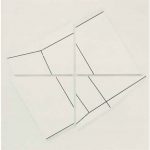
P-306 Divisibility I
Artist(s): [Mohr]
Art Categories: [2D & Wall-Hung]
[SIGGRAPH 1986] -
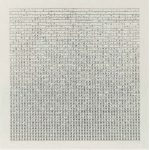
P-155 Cubic Limit
Artist(s): [Mohr]
Art Categories: [2D & Wall-Hung]
[SIGGRAPH 1986] -
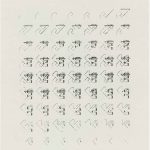
P-26 /2 Inversion Logique
Artist(s): [Mohr]
Art Categories: [2D & Wall-Hung]
[SIGGRAPH 1986] -
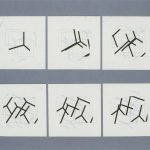
P-417-E
Artist(s): [Mohr]
Art Categories: [2D & Wall-Hung]
[SIGGRAPH 1989] -
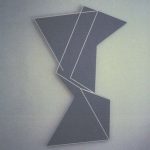
Half Planes
Artist(s): [Mohr]
Art Categories: [3D & Sculpture]
[SIGGRAPH 1998] -
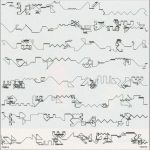
P-021-Band Structure
Artist(s): [Mohr]
Art Categories: [2D & Wall-Hung]
[SIGGRAPH 1998] -
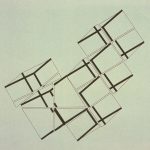
P-361-C
Artist(s): [Mohr]
Art Categories: [2D & Wall-Hung]
[SIGGRAPH 1985] -

P-370-G
Artist(s): [Mohr]
Art Categories: [2D & Wall-Hung]
[SIGGRAPH 1985] -

P-370-1
Artist(s): [Mohr]
Art Categories: [2D & Wall-Hung]
[SIGGRAPH 1985] -

P-370-J
Artist(s): [Mohr]
Art Categories: [2D & Wall-Hung]
[SIGGRAPH 1985] -
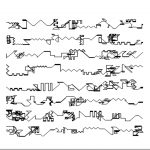
P-21 Band-Structures
Artist(s): [Mohr]
Art Categories: [2D & Wall-Hung]
[SIGGRAPH 1986] -

P-52 Quark-Lines
Artist(s): [Mohr]
Art Categories: [2D & Wall-Hung]
[SIGGRAPH 1986] -
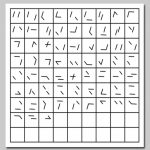
P-161 Cubic Limit
Artist(s): [Mohr]
Art Categories: [2D & Wall-Hung]
[SIGGRAPH 1986] -

P-200 /2009/ 2015 /2016/ 2020 Cubic Lim...
Artist(s): [Mohr]
Art Categories: [2D & Wall-Hung]
[SIGGRAPH 1986]

